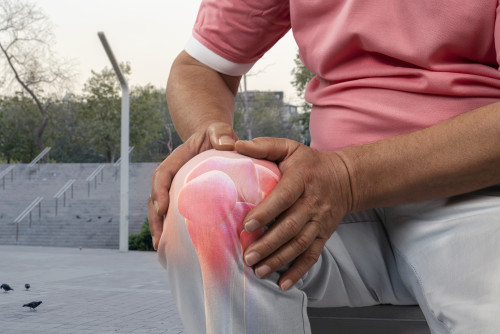The Centers for Advanced Orthopaedics is redefining the way musculoskeletal care is delivered across the region with locations throughout Maryland, DC, Virginia and Pennsylvania.
Understanding Pain
 Chronic pain is a major health and economic problem here in the United States. Prevalence rates of people experiencing chronic pain are high and increasing. Chronic pain, also called persistent pain, is defined as pain that persists past the normal time of tissue healing (typically 4 - 6 weeks) and/or when the pain lasts for 3-6 months or longer. Chronic pain can be caused by ongoing tissue damage, such as osteoarthritis. However, there are instances where the persistence of pain cannot be explained as the result of tissue damage or an obvious anatomic defect. In cases such as these, there is evidence that individuals with chronic pain have an abnormal regulation of pain signals within their central nervous system; their nervous system becomes sensitized.
Chronic pain is a major health and economic problem here in the United States. Prevalence rates of people experiencing chronic pain are high and increasing. Chronic pain, also called persistent pain, is defined as pain that persists past the normal time of tissue healing (typically 4 - 6 weeks) and/or when the pain lasts for 3-6 months or longer. Chronic pain can be caused by ongoing tissue damage, such as osteoarthritis. However, there are instances where the persistence of pain cannot be explained as the result of tissue damage or an obvious anatomic defect. In cases such as these, there is evidence that individuals with chronic pain have an abnormal regulation of pain signals within their central nervous system; their nervous system becomes sensitized.
Pain begins when the body responds to a stimulus or action (ie. touching a hot stove). This activates sensory receptors in our skin. These receptors send messages via nerve fibers to the spinal cord and then onto the brain. The sensation of pain is registered, information is processed, and the pain is perceived. If there is repetitive activation of these sensory receptors, they take on a higher degree of readiness and become more sensitized. This increase in sensitivity to the nervous system causes a reduction in the normal pain threshold. This means that pain can be felt in response to stimuli that are not normally painful.
There are techniques for helping to reverse sensitization of the nervous system called modulation. Modulation of the pain signals to the brain is important to reset the pain threshold to a more normal level. Meditation and a gradual increase in physical activity are a few techniques that can help decrease sensitization and the effects of chronic pain. Physical Therapy with an emphasis on exercise, is designed to help reduce sensitization, along with helping the patient gain a better understanding of their individual pain triggers. All of these interventions and techniques are designed to influence and reduce the factors that increase an individual’s pain levels.